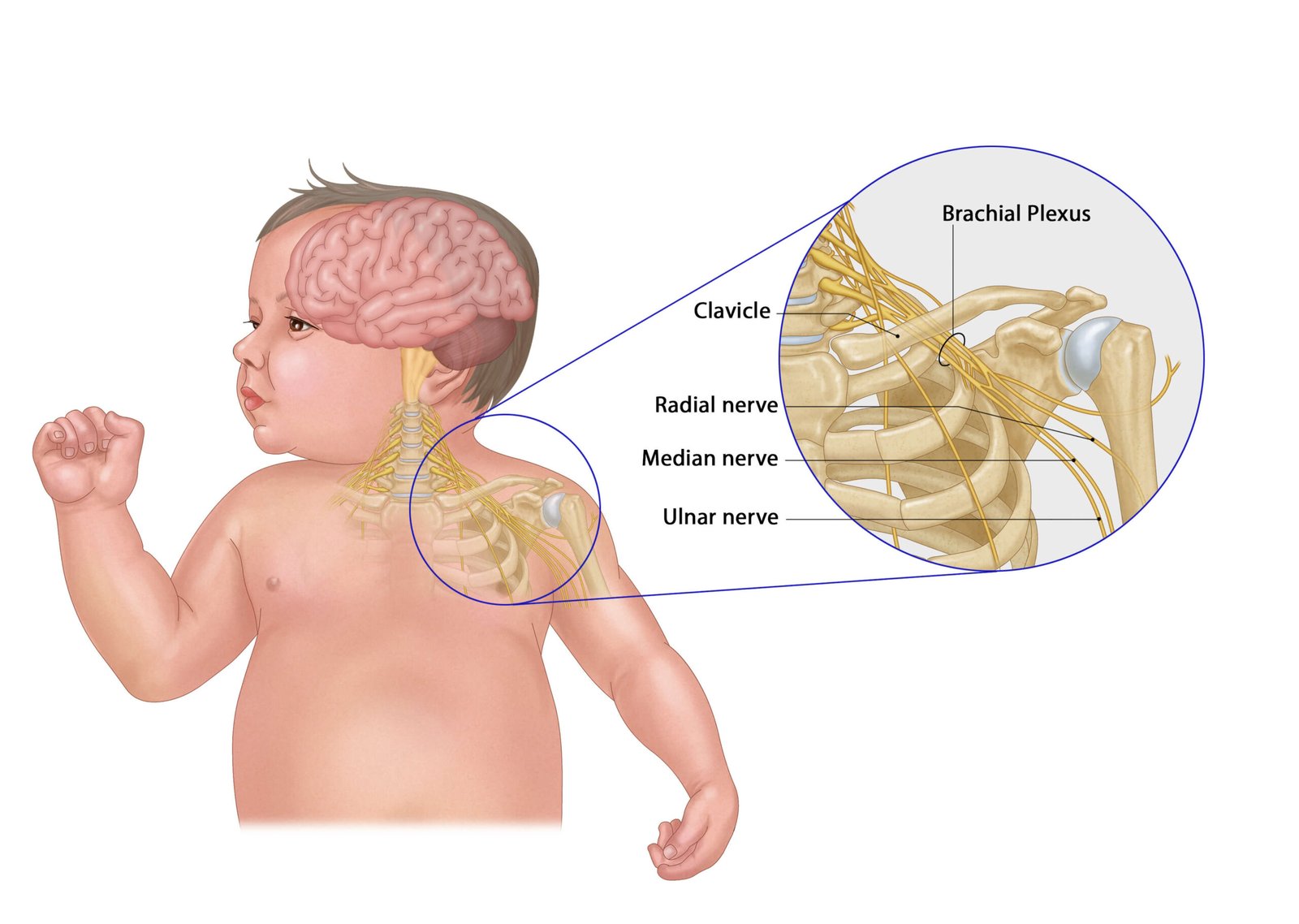Brachial plexus palsy or Erb’s palsy – This course is designed to understand the care of pregnant women and newborn: antenatal, intra-natal and postnatal; breast feeding, family planning, newborn care and ethical issues, The aim of the course is to acquire knowledge and develop competencies regarding midwifery, complicated labour and newborn care including family planning.

Brachial plexus palsy or Erb’s palsy
The brachial (brake-ee-al) plexus is a large network of nerves running from the neck to the arm. These nerves provide movement and feeling to the arm and hand. Brachial plexus palsy is weakness or paralysis in parts of the arm as a result of significant injury to the brachial plexus, which can happen during childbirth. The most common type of brachial plexus palsy is called Erb’s palsy.
Brachial plexus palsy may be caused during childbirth. Sometimes after the baby’s head has been delivered, the shoulders sometimes get trapped inside the mother’s pelvis. To free the shoulders, the head is tilted to the opposite side and this stretches the brachial plexus nerves. Brachial plexus palsy can also be due to the baby’s position inside the uterus, and in rare cases may occur during a Caesarean section.
Signs and symptoms of brachial plexus palsy
The nerves that make up the brachial plexus carry electrical signals (instructions) from the brain to the arm, so that the arm and hand can feel and move. If nerves are injured, the muscles of the arm and hand may not receive all of the instructions from the brain. This may result in:
- the affected arm not moving normally
- the muscles in the arms starting to waste (get smaller)
- limited feeling (e.g. of temperature or pain) in the affected arm.

Your baby may also have other problems as a result of the injury, including:
- a broken collar bone (clavicle)
- a broken upper arm bone (humerus)
- Horner’s syndrome (the eyelid droops and the pupil of the eye is slightly smaller on the same side as the weak arm).
Brachial plexus injury in newborns
The brachial plexus is a group of nerves around the shoulder. A loss of movement or weakness of the arm may occur if these nerves are damaged. This injury is called neonatal brachial plexus palsy (NBPP).

Causes
The nerves of the brachial plexus can be affected by compression inside the mother’s womb or during a difficult delivery. Injury may be caused by:
- The infant’s head and neck pulling toward the side as the shoulders pass through the birth canal
- Stretching of the infant’s shoulders during a head-first delivery
- Pressure on the baby’s raised arms during a breech (feet-first) delivery
- There are different forms of NBPP. The type depends on the amount of arm paralysis:
- Brachial plexus palsy most often affects only the upper arm. It is also called Duchenne- Erb or Erb-Duchenne paralysis.
- Klumpke paralysis affects the lower arm and hand. This is less common.
- The following factors increase the risk of NBPP:
- Breech delivery
- Maternal obesity
- Larger-than-average newborn (such as an infant of a diabetic mother)
- Difficulty delivering the baby’s shoulder after the head has already come out (called shoulder dystocia)
Read More.
